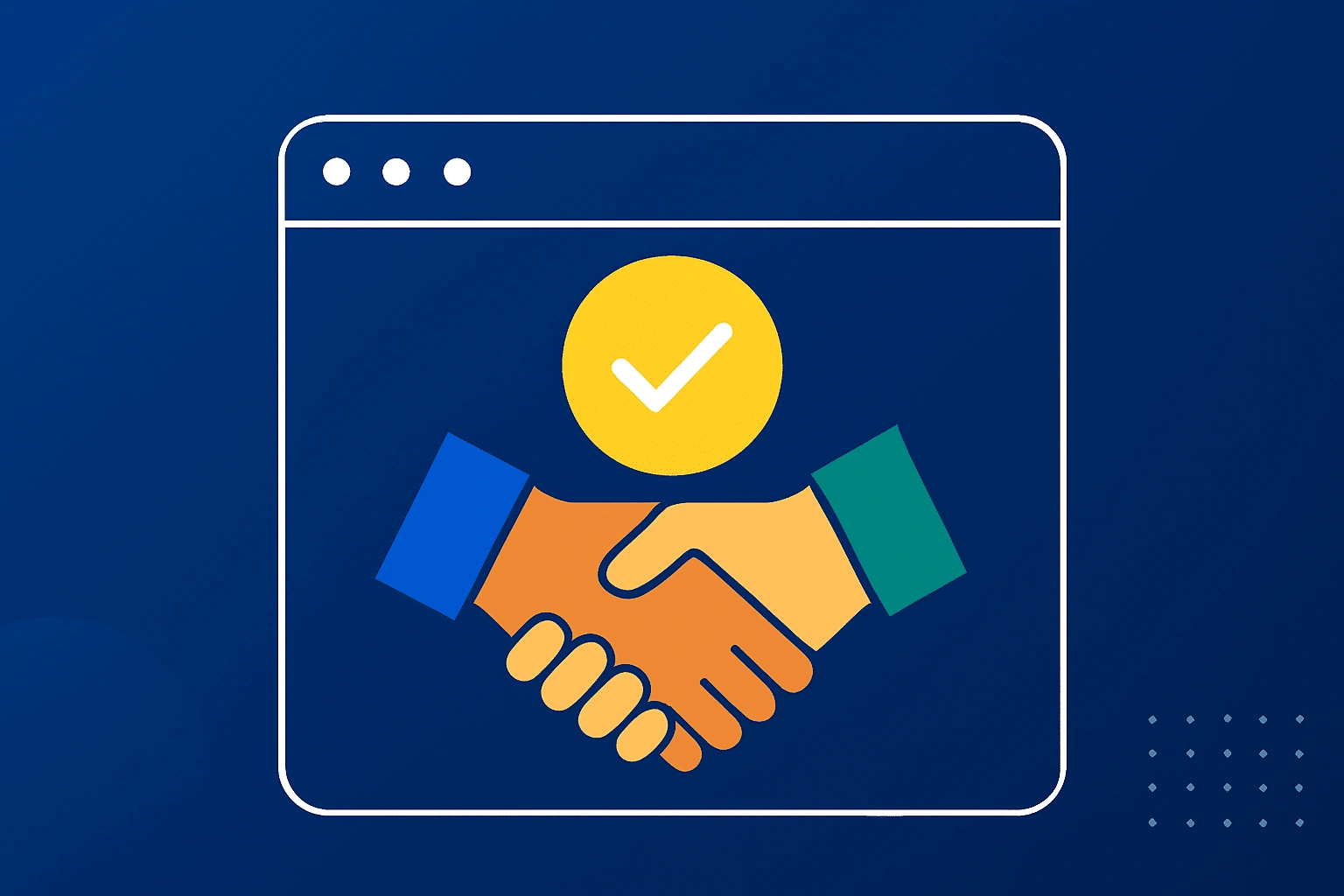What Are Embedded Payments?
Embedded payments are payment processing capabilities built directly into a software platform so that customers can complete transactions without leaving the application or being redirected to a third-party payment portal. For an independent software vendor (ISV) or a SaaS company this means your product not only manages core business operations but also handles billing, payment submission, tokenization, settlement or workflows, all within the same user interface.
When done well the payment experience feels natural and seamless. Your user schedules a service, uploads a file or selects a subscription tier, and the payment is handled behind the scenes in the same flow.
Embedded vs integrated vs traditional
It helps development teams to draw three clear categories of payment experience:
Traditional payments: The user is redirected out of the software environment or uses a separate payment application to complete payment. The payment provider may not be tightly integrated with your workflow.
Integrated payments: Your software connects to a payment system via API or plugin. Payment functions appear inside your product but often via a hosted page, redirect or a separate UI module. The user may still feel a third-party element.
Embedded payments: The payment flow is built into your product under your brand, without redirect, with full control of UX, user data, onboarding, tokenization and settlement, often designed for the exact vertical or workflow your platform serves.
If the user never leaves your product and you control the payment interaction as part of your workflow, you are doing embedded payments.
Why Embedded Payments Matter for ISVs
For ISVs and SaaS companies building platforms for other businesses, embedded payments offer meaningful strategic advantages.
Customer retention
When payments are integrated into your product the user remains in your environment, reducing friction at checkout or renewal. That seamless experience improves the likelihood of renewal and reduces churn. Platforms that embed payments tend to keep users engaged because there is one less point of vendor handoff.
Additional revenue streams
By embedding payments you open up monetization beyond your core subscription or license fee. Your platform can earn a share of transaction fees, offer premium payment-related services such as fraud monitoring, analytics and payouts, or move into a payments facilitation model. Research shows that non-financial software platforms embedding payments can meaningfully shift their revenue mix.
Better UX control
When the payment experience is part of your software you control branding, workflow, styling, user journey, error handling and reporting. That leads to higher satisfaction and fewer support issues. You also avoid the dilution of brand when a third-party redirect or external page is used.
Developer Considerations
From a technical and product standpoint, embedding payments requires specific considerations beyond simply hooking up a gateway.
APIs and SDKs
A proper embedded payments setup demands developer-friendly APIs such as RESTful endpoints, webhooks and SDKs for mobile or native apps if applicable. These allow you to integrate capture of payment methods like credit cards, ACH and digital wallets. They also support tokenization, subscription lifecycle, refunds and payouts. Your development team must evaluate the SDKs, sandbox environment, documentation, versioning and how the partner supports your stack such as JavaScript or backend languages.
Webhooks and data latency
Payment systems operate asynchronously. Success or failure of transactions, chargebacks, refunds, declines and disputed transactions often trigger events via webhooks. Your platform must subscribe, handle retries, apply idempotency, update UI, reconcile records, alert users and reflect state in your system. Poor webhook handling leads to stale data, confusion, mismatches and support issues.
Multi-currency support
If your SaaS product serves global markets you will need support for multiple currencies, local currencies, settlement currency, exchange rates, fees and regulatory or cross-border compliance. Some embedded payment providers offer multiple currency acceptance and global settlement. Make sure you plan for user experience including display currency and rounding as well as settlement such as the currency you receive and any FX risks.
Risk, Compliance and Liability
Embedding payments pulls in financial operations which means you must still manage risk, compliance, underwriting and payment data security even if you outsource much of it.
Who owns KYC and fraud risk?
When you integrate embedded payments you must decide responsibility lines. Are you the merchant of record? Are you underwriting sub-merchants or using a sponsor or acquirer? If you become a payment facilitator, you assume underwriting, KYC or AML and merchant monitoring. If you partner with a PayFac-as-a-Service you offload much of the compliance burden but still need visibility and governance. Clarify early who owns merchant onboarding, underwriting, risk monitoring, chargebacks, reserves and termination.
Tokenization and PCI scope
Since you are handling payment flows inside your product you must pay attention to PCI-DSS scope. Use tokenization so you do not store raw cardholder data. Use hosted fields, token vaults or gateways that remove card data from your scope. Reducing your PCI footprint is an important risk mitigation and compliance step.
Integration Models
Your path to embedded payments will vary based on how much control you want and how much responsibility you are willing to take.
Build vs partner
You can attempt to build the payment infrastructure yourself, including merchant accounts, acquiring relationships, underwriting and settlement. That gives full control but comes with significant operational burden and regulatory risk. Alternatively you can partner with a payments provider or PayFac-as-a-Service that handles much of the payments stack while you focus on product. This is the most common path for ISVs.
Hosted vs full stack vs hybrid
Hosted payments: A third-party payment page or widget is embedded inside your application. The redirect or the backend is managed by the provider. It requires less effort but offers less control.
Full stack embedded: Your product owns the UI, workflow and tokenization. You manage the experience while the payment partner runs the processing behind the scenes. This offers maximum control.
Hybrid model: Some parts are embedded and others are hosted. For example, onboarding might be hosted while recurring billing is embedded. This approach balances speed and customization.
Choose the model that fits your product roadmap, regulatory goals, vertical needs and monetization strategy.
What to Look for in a Payments Partner
When selecting a payments partner for embedded payments there are key criteria to evaluate:
- Developer-friendly APIs, SDKs, documentation and sandbox access
- Support for your verticals such as medical spas, transportation, automotive, jewelers, gyms and health or wellness
- Multi-currency and international payment support
- Tokenization, encryption and PCI-DSS compliance
- Clarity on responsibilities including underwriting, KYC, chargebacks and reserves
- Transparent monetization options including revenue share and flexible rate structures
- Ability to scale across new markets, payment types and user volumes
- Brandable experience to maintain consistent UX and design
- Technical support for webhook management, event handling and implementation guidance
Embedded payments for ISVs are not just a convenience. They are a competitive advantage. If you are building software for vertical businesses, embedding payments gives you a better product experience, stronger customer retention and new monetization opportunities. By choosing the right architecture and payment partner, your team can build a better platform without losing focus on your core product.





